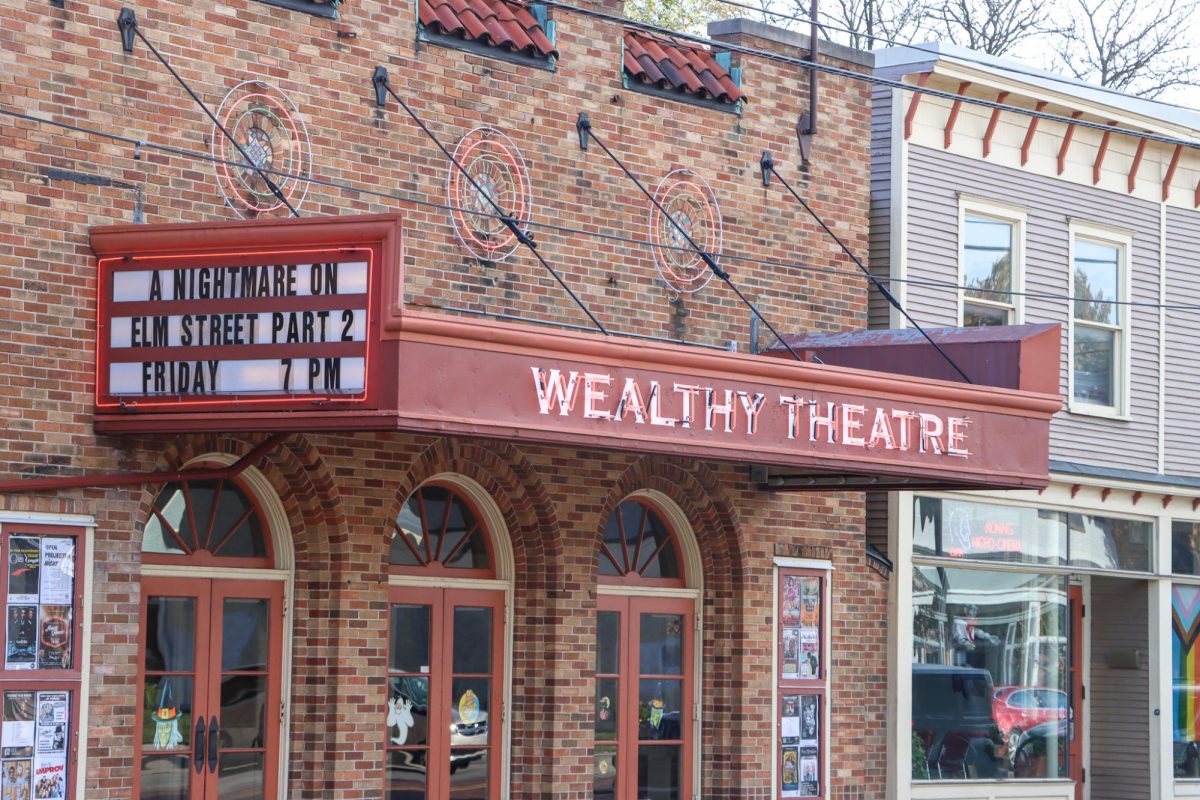The Grand Rapids Art Museum (GRAM) is currently hosting an audio-visual exhibition titled “Border Cantos | Sonic Border,” which puts the realities of the U.S.-Mexico border on full display. The project is a collaboration between American photographer Richard Misrach and Mexican composer Guillermo Galindo.
Through the combination of two works, the exhibition demonstrates the unique affordances of each artist’s respective medium. Galindo’s music composition allows museumgoers to “hear” Misrach’s photos as they move through the exhibit. Misrach’s photos allow attendees to visualize the border – an environment riddled with shotgun shell casings, sheet metal, abandoned clothing and other items that Galindo used to create sculptures for the exhibit.
These items in Misrach’s photos were also used to create seven sculptures for the exhibit. These sculptures range from a makeshift keyboard that incorporates cans, cardboard ammunition boxes, piano keys and an industrial-style piñata made of sheet metal and shotgun shell casings. Galindo paired each of the seven sculptures with a custom soundtrack that can stand on its own but creates a harmonic melody when heard from a distance. The haunting musical undertones combined with the sculptures’ beauty and grandness highlight the 260-minute piece that runs on a loop, even when the museum is closed.
Galindo and Misrach use their art in tandem to garner sympathy for a human experience that is frequently politicized, while simultaneously asking viewers to consider perspectives that are often dismissed. Aside from one image in the exhibit, people are completely absent in Misrach’s photos, allowing the viewer to experience a first-person viewpoint of an immigrant at the border.
“We’re artists, we’re not politicians,” Galindo said. “We want to give people the experience of the border and to get (people) acquainted with the immigrants’ journey. (We wanted) to make it (the exhibit) palpable – to make it human.”
To further embed museumgoers in the exhibit, a gallery chat was held on Feb. 13, where visitors had the opportunity to hear from Geraldine Molyneux, a GRAM docent, about the art on display. Molyneux said the cultural divide is evident in Misrach’s images. One photo in Misrach’s collection captures the scenic countryside of a home on the Texas-Mexico border with a giant fence in the foreground – separating the countries, cultures and realities.
“The question I always like to ask young people is, ‘if you were leaving home and all you had was a backpack, what would you put in it?’” Molyneux said.
Misrach addresses this question through his photographs by focusing on the items left behind at the border by immigrants. Tattered clothing, discarded backpacks, water bottles and dirt-covered teddy bears are just some of the items featured in Misrach’s photos.
GRAM believes this exhibit will be a powerful, eye-opening experience for many individuals who are unfamiliar with the realities of life at the border. Jennifer Wcisel, the GRAM’s associate curator, said she hopes the exhibit will give a voice to those on the opposite side of the border who make the journey to America for a better life.
“We hope the exhibition encourages visitors to reflect on the humanity of these experiences, as well as their own migration stories,” Wcisel said.
“Sonic Border | Border Cantos” will be on display at the GRAM until April 28. Further information and pictures of the exhibition’s artwork are available on the GRAM’s website.

























